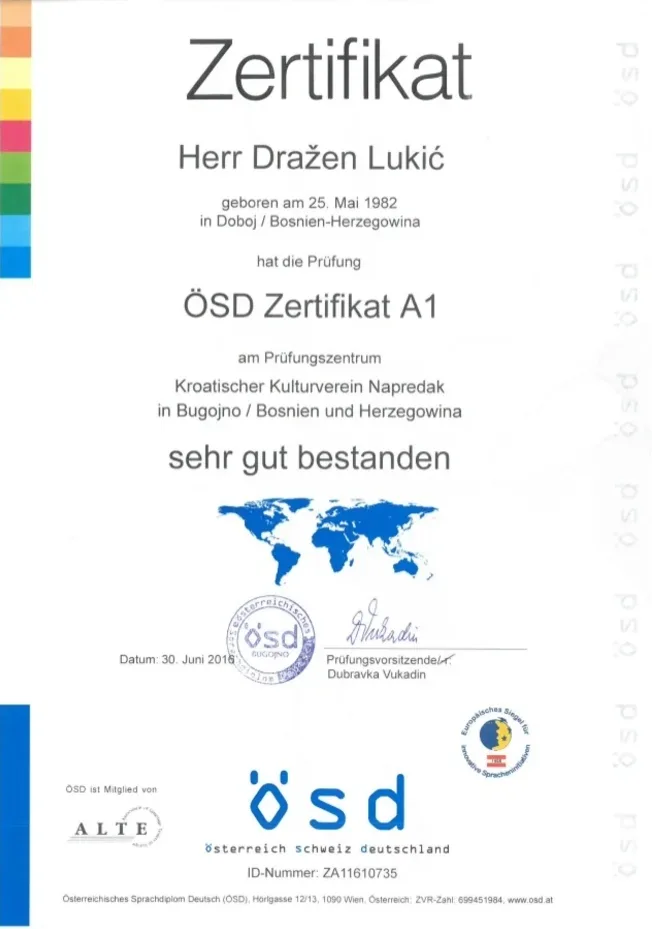Understanding the Integrated German Model: A Comprehensive Overview
The integrated German model, frequently described as the "German model," is an unique system that intertwines financial growth, social equity, and a strong focus on employment training. It has gathered attention for its capability to keep a high level of employment, strong industrial production, and a robust well-being state. ÖSD-Zertifikat A2 into the elaborate layers of the integrated German model, examining its history, structure, advantages, and prospective obstacles. By the end, readers will have a clearer understanding of this notable economic framework and its implications for other nations.
Historic Context
Germany's economic structure has evolved significantly over the previous century. The post-World War II period brought about the requirement for reconstruction, causing the facility of a social market economy. Social market economy principles focused on stabilizing free-market commercialism with social policies that guarantee reasonable competitors and a safeguard for residents.
Over the years, the nation's financial policies have adapted to internal shifts and worldwide modifications. The reunification in 1990 presented brand-new difficulties and chances, triggering modifications in labor laws, training programs, and welfare provisions. This development has actually resulted in the present integrated German model, which integrates various sectors and stakeholders.
Secret Features of the Integrated German Model
The integrated German design is characterized by numerous crucial elements that work cohesively to foster financial stability and social equity:
1. Vocational Training and Education
A foundation of the German design is its dual education system, which combines class learning with useful on-the-job experience.
Apprenticeship Programs: Students usually go into vocational programs at age 16, where they invest part of their time in a business and the other part in school.
Industry-Specific Training: Companies play a crucial role in training employees tailored to meet the specific requirements of their industry.
2. Strong Bilateral Relationships
The integrated design facilitates cooperation among stakeholders, including:
Industry and Trade Unions: Open discussion motivates collective bargaining and cooperation.
ÖSD-Zertifikat B2 : The state produces policies that promote a balanced relationship in between service and labor interests.
3. Social Security Systems
Germany's well-being state is thorough, designed to provide residents with:
Healthcare and Pension Schemes: Universal health care, retirement benefits, and joblessness insurance coverage are fundamental aspects of the welfare system.
Assistance for Families: Childcare assistance and adult leave initiatives demonstrate a dedication to family well-being.
4. Economic Stability
Germany's economic structure emphasizes:
Export-Led Growth: With a strong production base, Germany is one of the world's leading exporters, focusing on quality and development.
Financial Responsibility: The government preserves sound financial policies to guarantee long-lasting economic sustainability.
5. Ecological Sustainability
Recently, the German model has also integrated concepts of sustainability, ending up being a frontrunner in renewable resource and eco-friendly practices.
Advantages of the Integrated German Model
The integrated German design offers several advantages that have actually made it a topic of affection worldwide:

Low Unemployment Rates: High levels of occupation training cause a competent labor force that satisfies industry demands.
Strong Economic Performance: Germany has one of the biggest economies in the European Union and one of the greatest worldwide, with a low average debt-to-GDP ratio.
Social Cohesion: By ensuring broad access to social advantages, the model helps to lower inequalities and supports social movement.
Promoting Innovation: Close cooperation between services and instructional institutions fosters a culture of development.
Challenges Faced by the Integrated German Model
Regardless of its benefits, the integrated German model is not without difficulties.
Aging Population: Germany faces market shifts that could strain its social security system and labor force accessibility.
Worldwide Competition: Increased globalization and competitors require continuous adjustment and development within markets.
Regional Disparities: Economic distinctions in between Eastern and Western areas still continue, stemming from historical elements and differing levels of investment.
Frequently asked questions
Q1: What makes the German trade training system unique?
A1: The dual education system combines theoretical understanding with useful training in a workplace, guaranteeing that trainees obtain relevant abilities that meet industry requirements.
Q2: How does the integrated German design promote social equality?
A2: By offering detailed social well-being programs and ensuring access to education and job training, the design produces a framework that supports social movement and reduces financial disparities.
Q3: What function does the government play in the German financial model?
A3: The federal government regulates and facilitates cooperation between services and labor unions, develops social well-being policies, and purchases education and infrastructure to promote economic growth.
Q4: Can other nations embrace the integrated German model?
ÖSD-Zertifikat B1 : While elements of the integrated German design could be adjusted or adopted by other countries, the special historical, cultural, and financial contexts must be considered for effective application.
Conclusion
The integrated German design stands as a robust and adaptable financial structure that highlights vocational training, social equity, and collaboration in between federal government, industry, and labor. While challenges exist, its strengths have made Germany a leading example of how a balanced approach can yield considerable advantages. As other countries seek to renew their economies and improve social well-being, comprehending the complexities of the integrated German model might offer important insights for future policies.
